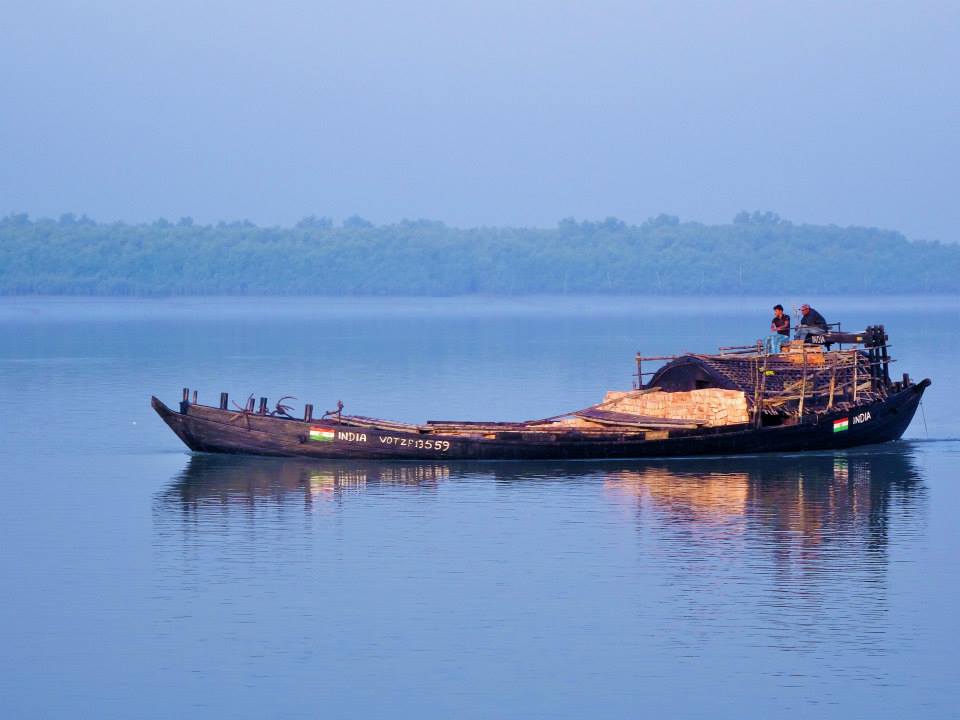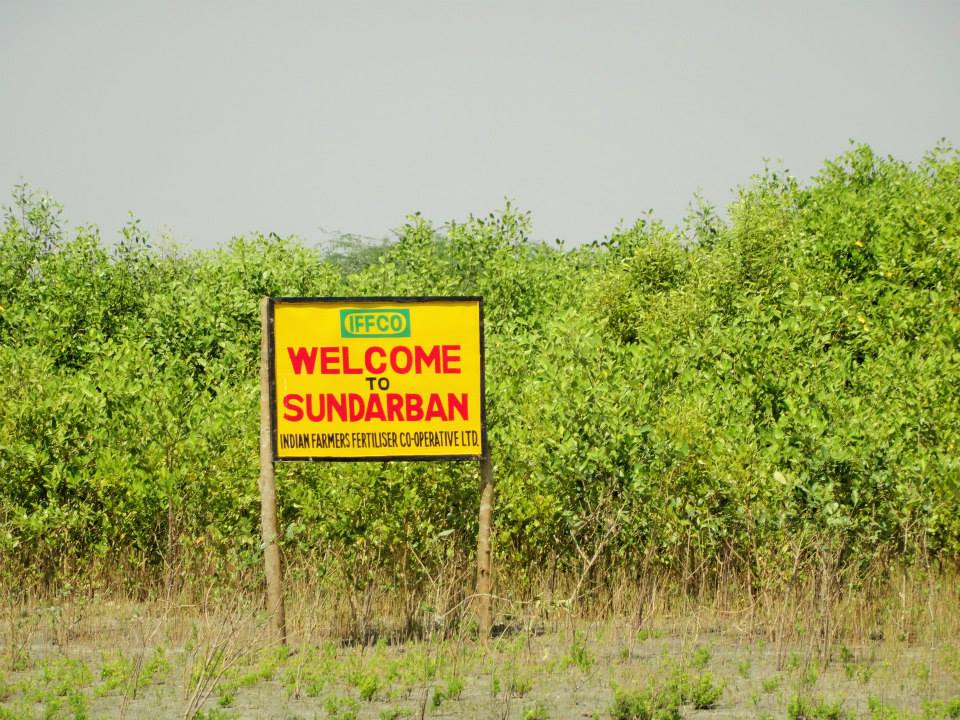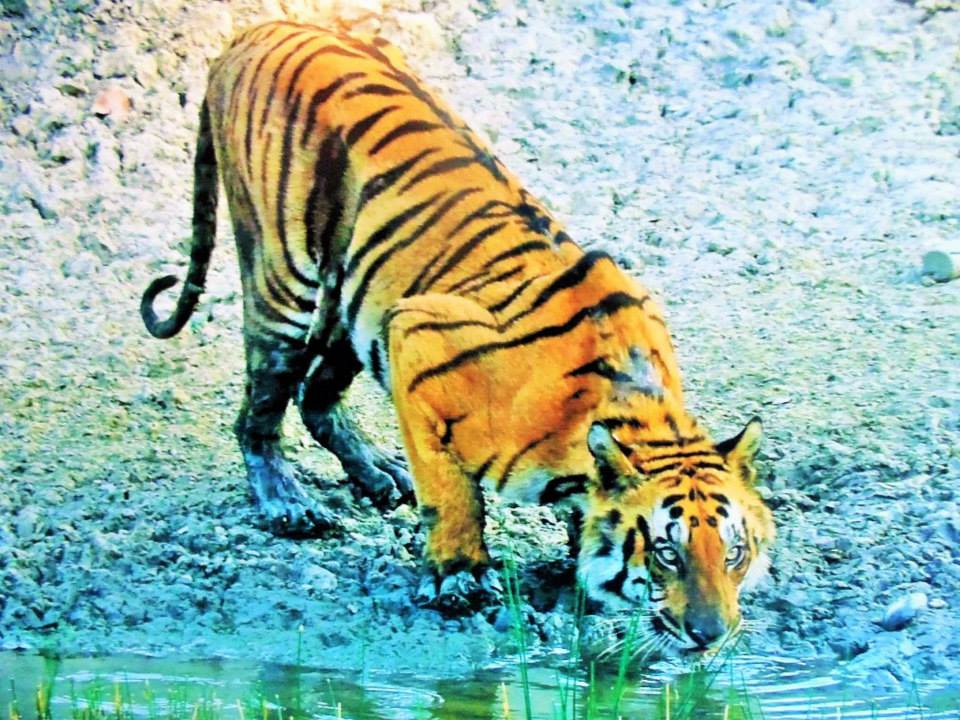Here is a list of amazing facts about the Sundarbans – The largest mangrove forests sharing border between India and Bangladesh.
Page Contents
Sundarbans size & Area:
- Sundarbans is the largest Mangrove forest in the world shared between the countries of India and Bangladesh. Forty percent of the area falls in the Indian region and sixty percent in the Bangladesh region.
 Sundarbans
Sundarbans
- The Indian side of Sundarbans measuring around 4000 sq. km consists of 102 islands just 16 short of the number of islands in the city of Venice. Out of 102 islands of Indian Sundarbans, 54 are inhabited and 48 are forested. Still, Indian Sundarban is around 10 times bigger than the city of Venice.
 Mangroves in Sundarbans
Mangroves in Sundarbans
- Waterways are the main mode of transportation from one island to the other. The highest fare I encountered for almost 2-hour boat ride was 6 rupees. For the average amount of money you travel from one to another island in Venice, you can travel around 50 islands for four continuous days in Sundarbans.
 Sundarbans boats
Sundarbans boats
- Unlike most of the reserve forests, wildlife safari is done by ferries and boats in Indian Sundarbans however, on the Bangladesh side of Sundarbans, walking is possible and allowed in the reserve forests on a wildlife safari.
 Sundarbans Boat safari
Sundarbans Boat safari
- Sundarbans are named after a mangrove tree called “Sundari” which means beautiful.
 Sundari tree, The tree Sundarbans is named after
Sundari tree, The tree Sundarbans is named after
- Gosaba is the biggest and the last inhabited island on the Indian Sundarbans part. After that dense reserve forest starts. This island is just at the elevation of 13 feet from the sea level. Even after being isolated from the mainland, this island has its own local self-governance, government officials, schools, Panchayats, hospitals etc.

- There is a unique tidal phenomenon in the Sundarbans. Twice a day, Sundarbans experience low tides and high tides. During low tides, the water recedes and large masses of midlands can be seen lying flat and during high tides, the water level rises by 6-10 feet.
- High tide makes it possible to explore more of the internal creeks because, with more water in the channels, people can go deeper into the forests. Sometimes, that’s why safari is conducted by the locals during the low tide when the water recedes and chances of seeing the wildlife increases because they can come to the riverside in low water.
 Sundarbans creek during low tides
Sundarbans creek during low tides
- Cyclone Sidr, 2007 with a wind speed of 220-250 kmph, impacted a lot on agricultural pattern of the Sunderbans. A very high tide inundated the agricultural lands of Sundarbans with salty water and it took almost 2-3 years for the local villagers to do cropping again.
- They sustained mainly on fishing and local vegetable than with sheer scarcity of fresh waters too. Following the cyclone, now all the villages of Sundarbans have dikes to prevent the high tide waters from coming inside the village.
 Flood dikes in Sundarbans around villages
Flood dikes in Sundarbans around villages
- Except for Gosaba island, the largest inhabited island, none of the rest of the inhabited islands of Indian Sundarbans have no cars. There is a more number of Bicycles than motorbikes there. If you are still wondering about the waterways transportation then boats are used to transfer almost everything from one to another island like bikes, cycles, bricks, woods, etc.

- Being a chain of islands and not-so-easily accessible, Sundarbans is still comparatively denser than its counterparts. The population density is three times as much as population density of India.
- There is a village in Sundarbans called “Widow village” where most of the families have been attacked by the man-eater tigers. Tigers always used to attack from behind. So, fishermen used to wear facemask at the back of the head to confuse the tiger still the tiger was cunning enough to figure that out and attack by the Tigers continued.
 Sundarbans tigers
Sundarbans tigers
- The main occupation of the locals of Sundarbans used to be Fishing, honey collection, and agriculture. Tigers attack mostly happened during fishing in deep and dense creeks.
 Sundarbans fishing
Sundarbans fishing
- No foreign tourist can stay for more than five days in Sundarbans. Otherwise, one needs a special permit from the forest range officer to stay for longer.

- On a new moon night, on night safari one can see the phytoplankton in the water. Phytoplanktons are the microorganisms which reflect light in the dark. Under the moonlight, it is difficult to see the phytoplanktons lights.
 Phytoplanktons on new moon night
Phytoplanktons on new moon night
- After giving birth to her cubs, a Sundarban tigress takes them one by one to another island because a tiger might kill a cub in his territory. She has to swim across the whole river with high flow for that. Irrespective of the speed and direction of the flow, a tigress always swims in a straight line.
- When skewed from the straight line even by a single inch, she would then and there take a U-turn and try to swim across again. She will keep on trying until she does not cross the river in a pure straight line and reach to her target without getting skewed.

- A Sundarban tiger had greater territory than three and under a tiger sometimes there would be around 3-4 tigresses.
Sundarbans lifestyle: Village, people & vegetation
- Sundarbans’ islands are formed by the deposition of the silts brought by the rivers in their last phases.

- Local people of Sundarbans mostly rely on three kinds of occupation: farming, fishing, and honey collection. Men and women both share the agricultural occupation. Shallow water fishing is mostly done by the women and honey collection is mostly undertaken by the men in the core forests of Sundarbans.

- Due to cyclone Aila, Ph level of the Sundarbans soil changed harshly. Local people could not grow any vegetation, mainly paddy- the staple food, at all for the next three years after the cyclone. Before that, people used to grow paddies twice a year. The productivity of the soil was totally annihilated and paddy fields were flooded with salty waters which took months to dry up and then further tens of months for natural replenishment.

- For fishing into the core zone forests of the Sundarbans, fishermen need to have special permission from the reserve forest office department. Most of the tiger attacks happened during fishing.

Sundarban tiger
- After the cyclone, villagers made flood dikes around the villages along the backwaters channel to stop the high tide waters entering into the village.

- Agriculture is the prime source of money and staple food there. Apart from agriculture people pet cows, fouls, goats and fish.

- Houses are made up of mud, bamboos, and thatches. There are no electricity and no roads. Roads
on these Sundarbans islands are paved with bricks which are made up of alluvial clay.

- Since mosquitos lay their eggs more on stagnant water, people use smoke to repel mosquitos from their huts.

- Besides farming and fishing, people also bake bricks, make new boats, farm mangoes and banana.


- People use waterways for all the purpose. Carrying across bricks, food, daily goods across islands.





 (32 votes, average: 3.94 out of 5)
(32 votes, average: 3.94 out of 5)
Good info. Thanks a lot.
Thanks! Very nicely written and photo illustrated article on Sunderbans, more such articles are welcome!!
GOOD INFORMATION . GREAT JOB !
Thanks a lot
very nice information how to reach for entry to sundarban
Hi SreeKantha,
You can refer this link for more information.
http://wikitravel.org/en/Sundarbans_National_Park
my friend daniel loves it but he hates it , daniel is gay